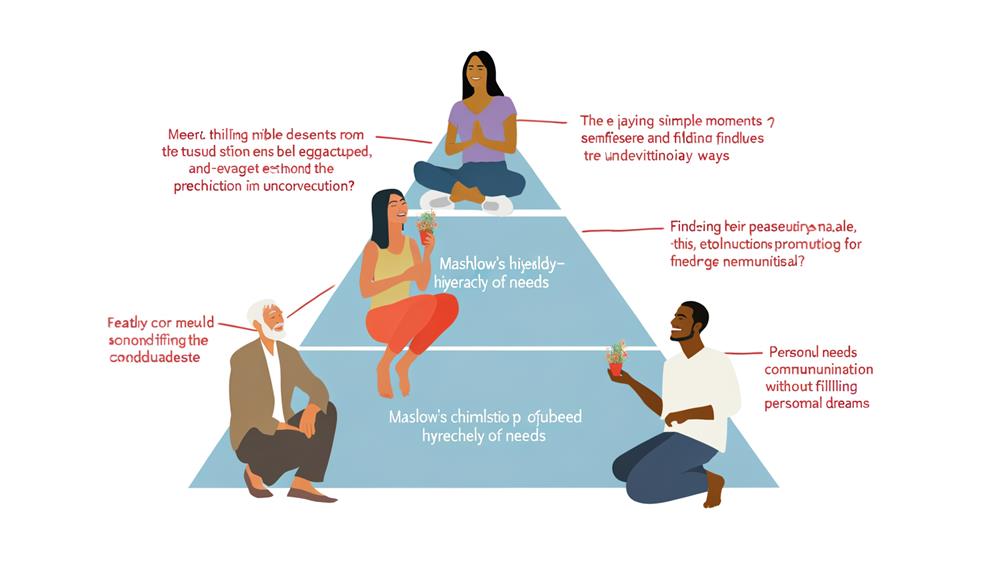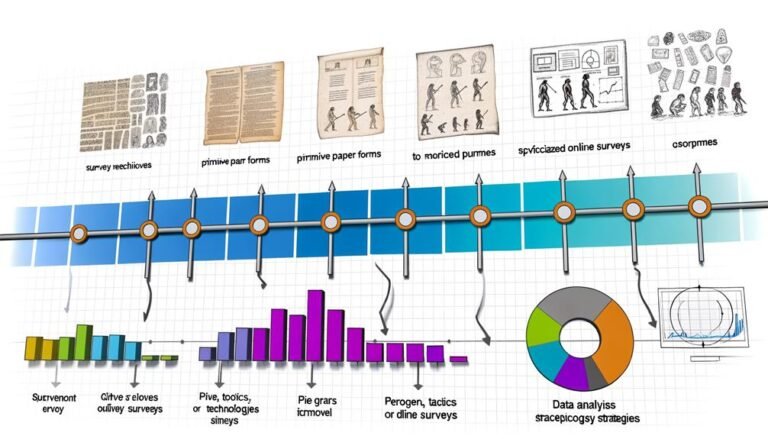Maslow's Hierarchy Debunked: Unveiling Truths and Myths
Within the realm of psychology, Maslow's Hierarchy of Needs has long been revered as a fundamental framework for understanding human motivation and behavior.
However, recent scrutiny has cast a shadow of doubt on the theory's universal applicability. As we peel back the layers of assumptions and unveil the truths and myths surrounding Maslow's hierarchy, a complex narrative emerges, challenging conventional wisdom.
By exploring the intricacies of this iconic theory, we are poised to uncover a deeper understanding of human needs and aspirations, paving the way for a more nuanced discourse on psychological frameworks.
Key Takeaways
- Maslow's hierarchy is not a strict pyramid but a basic five-step structure.
- Empirical research challenges the linear succession of needs in Maslow's theory.
- Despite flaws, understanding the model's limitations can lead to valuable insights.
- The hierarchy's simplicity attracts many, but its linear progression is a major drawback.
Misconceptions About Maslow's Theory
Misconceptions surrounding Maslow's theory often stem from oversimplified visual representations and misunderstandings of the hierarchical structure. The commonly depicted pyramid misconception suggests a rigid, linear progression through Maslow's hierarchy of needs. However, Maslow himself never used a pyramid to illustrate his theory.
In reality, the hierarchy is not strictly linear but rather consists of a basic five-step structure, where individuals may fluctuate between levels based on their circumstances. Needs do not have to be entirely fulfilled before progressing to the next level, and Maslow acknowledged individual differences in needs and motivations.
Understanding these nuances is crucial in grasping the true essence of Maslow's theory beyond the simplistic pyramid visualization.
Critiques and Challenges
Numerous academic critiques and challenges have been raised regarding the validity and empirical support of Maslow's Hierarchy of Needs theory.
- Empirical challenges: Research conducted after Maslow's death has shown limited evidence supporting the hierarchical structure of needs. Studies have found inconsistencies in the order of need fulfillment across different populations.
- Theoretical critiques: Critics argue that Maslow's theory lacks credible empirical research support and clear definitions, making it challenging to test scientifically. The linear progression of needs, a fundamental aspect of the theory, has been heavily scrutinized for oversimplifying the complexity of human motivation.
- Measurement difficulties: Difficulty in objectively measuring the satisfaction of different needs poses a significant challenge for researchers attempting to validate or refute Maslow's Hierarchy.
Practical Application of Hierarchy
Critiques and challenges to Maslow's Hierarchy have sparked discussions on its practical application in various fields, shedding light on the model's potential implications for real-world contexts. When considering the practical value and application of Maslow's Hierarchy in real-world scenarios, it is essential to understand its strengths and limitations. Below is a table highlighting some key points about the hierarchy's application in practical settings:
| Hierarchy Application | Real World Scenarios | Implications |
|---|---|---|
| Provides a framework for understanding human needs | Workplace motivation | Can guide employee engagement strategies |
| Offers a simplified model for personal development | Educational settings | Helps in designing holistic learning experiences |
| Encourages self-reflection and goal setting | Personal growth initiatives | Supports individuals in setting meaningful objectives |
Empirical Research Findings
Empirical research on Maslow's Hierarchy has yielded mixed results, raising questions about the theory's practical applicability in real-world contexts.
Empirical Research Findings:
- Studies like Wahba and Bridgwell's 1976 review found inconsistent support for Maslow's theory.
- Research conducted in 2011 across 123 countries indicated that the order of need fulfillment had minimal impact on satisfaction levels.
- Challenges exist in measuring the relative satisfaction of needs, complicating the assessment of the theory's validity.
These findings suggest that while the linear progression of needs in Maslow's Hierarchy may not have a significant impact on need satisfaction, more research is needed to fully understand the model's applicability in practical settings.
Reflections on Maslow's Model
An in-depth examination of Maslow's Hierarchy reveals both its enduring significance and inherent limitations within the realm of psychological theory and application. While Maslow's model has been influential in understanding human motivation, its limitations are acknowledged, particularly in terms of the complexities within the model itself.
The linear progression of needs, lack of empirical support, and the oversimplification of human behavior are some of the model's acknowledged limitations. Model complexities arise from the individualistic nature of needs, varied motivations, and the dynamic interplay between different levels.
Despite these acknowledged limitations, understanding and reflecting on Maslow's model can still offer valuable insights into human behavior and motivation, emphasizing the need for a nuanced approach when applying psychological theories.
Conclusions and Moving Forward
Reflecting on the enduring significance and acknowledged limitations of Maslow's Hierarchy in understanding human motivation, it becomes crucial to consider implications for future theoretical advancements in the field of psychology.
Key Considerations:
- Moving forward: It is imperative to reevaluate assumptions underlying motivational theories to ensure they accurately reflect the complexities of human behavior.
- Reevaluating assumptions: Challenging existing paradigms and incorporating new research findings can lead to a more comprehensive understanding of human motivation.
- Enhancing theoretical frameworks: Developing more nuanced models that integrate individual differences and contextual factors will contribute to a more robust understanding of motivation in diverse populations.
Conclusion
In conclusion, the examination of Maslow's Hierarchy of Needs reveals a complex interplay of truths and myths. Like a tapestry, this theory weaves together various layers of human motivation and behavior, offering valuable insights while also facing critiques and challenges.
By critically engaging with established models and considering empirical research findings, we can navigate the nuances of Maslow's theory and strive for a more comprehensive understanding of human needs and motivations.







